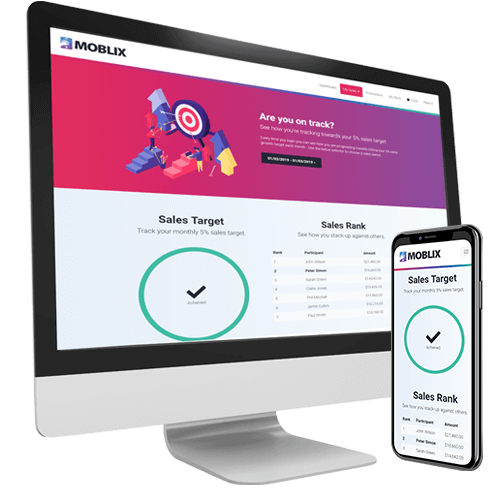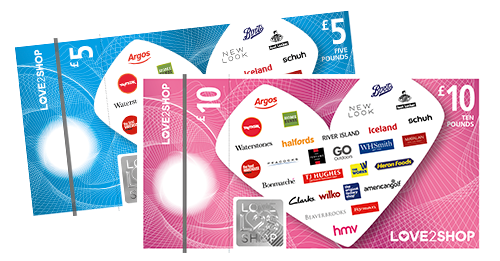How to Create an Employee of the Month Scheme for the 21st Century
There are two things that need to be acknowledged when putting together an employee of the month scheme for a contemporary workforce. The first is that all employee of the month schemes are a form of recognition.
The second is that they’re not perfect. There are great benefits, but there are drawbacks. By playing up the strengths and accommodating the weaknesses, you can design an employee of the month scheme that has a huge positive effect on your business.
Your employee of the month scheme could bring your business:
- A feel-good factor – Sharing positive thoughts and achievements boosts morale.
- Loyalty – We’ve talked before about the benefits of recognition, and loyalty is one of the key areas improved by quality recognition.
- Good habits– Making celebration a monthly habit helps ingrain a culture of respect and recognition in your staff.
- Employee sentiment – Improve how your employees see their own company, and how quality candidates will see your company’s culture.
This blog will take you through the key thoughts that need to be considered to make your employee of the month scheme a roaring success.
Click below to jump to a section:
1. Know what you need your employee of the month scheme to achieve

What kind of noticeable effect are you trying to generate with your employee of the month scheme?
It could be to increase employee motivation, to experiment with starting a recognition scheme, or to improve morale around the office. They’re all valid needs, and valid reasons to try a new scheme.
It’s a worthy question, because it gives you clarity of purpose. It focuses your other decision-making, which makes it easier to put the rest of your employee of the month scheme together; if it doesn’t serve your clear outcomes, it doesn’t need to be part of your plan.
Keep this outcome in mind when you’re going through the rest this blog, and when you’re organising your own scheme.
2. Treasure consistency

Expectation has a powerful influence on our minds, especially when expectations aren’t met. When you start an employee of the month scheme, your employees will anticipate that you consistently deliver what you set out to do. And they’ll notice if the scheme misses a month or falters.
Consistently delivering your employee of the month scheme makes it easier for staff to anticipate it and stay engaged.
Being consistent helps make sure you’re timely, and being timely is important for recognition. The impact of recognition is at its most powerful when it’s close to the behaviour or achievement you’re recognising.
Keeping your scheme consistent means you’re always as close as possible to something that happened in the last 30 days. While that’s not as good for morale as instant recognition, it’s a huge improvement over 60 days or more.
3. Embrace transparency and communicate effectively
 The most common stereotype of employee of the month is the portrait on the wall, with the little bronze “employee of the month” plaque on the frame. It doesn’t really tell you that much, does it?
The most common stereotype of employee of the month is the portrait on the wall, with the little bronze “employee of the month” plaque on the frame. It doesn’t really tell you that much, does it?
It also doesn’t really benefit anyone outside the manager/employee relationship. Especially if there’s no explanation for what that employee did to earn their recognition for the month.
Explaining why that employee merits special recognition would have two positive effects for your company.
First, you have a chance to explain your decision making process. Failure to communicate is often at the heart of workplace distrust and angst.
Explaining your decision making process clears up the ambiguity, leaving much less chance that an employee is going to become disgruntled.
Second, you can take an opportunity to reinforce your values. Assuming, of course, you take our advice and make sure the scheme integrates with an overall recognition plan.
As with recognition overall, what you choose to recognise is an endorsement of the business you want to build. Explaining why you’re issuing recognition is an opportunity to build a picture of the kind of values and behaviour you want your company to embody.
4. Boast about your big timers
 Share your employee of the month winners, and their achievements, with the public.
Share your employee of the month winners, and their achievements, with the public.
Making your appreciation for your staff public has two major benefits. First, you’re showing the world that your company is staffed by employees that excel, and produce achievements worth celebrating.
This improves your public reputation, positioning your company as a place of collaboration, success and recognition. And thus, a desirable partner or supplier.
However, while it’s important to control the external perception of your company, your internal one matters too. How staff perceive your company will influence their motivation, their loyalty, and their behaviour.
By boasting about your staff to the public, and putting their achievements in a public spotlight, you show your staff they work for a company that values them. And that’s a huge part of what recognition is all about – making staff see how important they see they are to your business, and feel that value.
Just be sure to get the permission of any employee you want to feature before putting them in the public sphere!
5. Refresh your scheme occasionally

Companies change. Employees’ work changes, your staff change, and your company’s culture grows.
Which makes it wise to stop and reflect now and then on whether your processes are right for your business today. That includes employee of the month schemes.
Take the time to ask yourself:
- Does this produce the outcomes we wanted it to?
- Do the processes work?
- Is our workforce interested in, and interacting with, the scheme?
If the answers are no, it’s time to think about a refresh in your approach. This conversation would be a great time to open the door to your staff’s thoughts. After all, they’re the group that are supposed to get the most benefit from the scheme itself.
If they’re not getting what they need out of the scheme, it’s worth asking how you can change the scheme to achieve your aims.
6. Don’t let a few stars steal the spotlight

One of the big signs of a stale, ineffective employee of the month scheme is repetition of winners.
Whether they go out of their way to do it or not, a niche group can consistently find themselves passing the baton between themselves.
This could be because of how you measure, who feels enlivened and engaged, or because you aren’t putting the time aside to really think about awarding winners. However you arrive at this point, it’s not a good thing.
It would be easy to say “well, the winners are the winners” and carry on, but that doesn’t cut it with the rest of your staff. Remember, this is part of your overall recognition system.
Alienating most of your staff to focus on a tiny group of number-hitters ruins enthusiasm for the scheme, and can even create distrust.
Consistently rewarding a small group for the sake achievements every month is a sign of poor employee of the month scheme design. Account for areas beyond just numbers.
7. Left-field employee of the month ideas

To make your employee of the month scheme accessible to all staff, you don’t have to stick to celebrating stereotypical individual performances. You can celebrate:
The best mistake
No, it’s not a typo! Sometimes we need to make a mistake and get something wrong to learn the best way to do something. A mistake that leads to significant growth and development, handled correctly, can be cause for celebration. It also downplays the idea that failures are fatal, and encourages staff to accept risk and failure as long as they’re educational.
A big personality
Some staff create huge value to your workplace in ways that are difficult to measure. They bring the mood up on difficult days, they make other staff see their value, they bring calm in emergencies, they uplift the performance of peers. Celebrate the stuff that everyone notices but doesn’t end up on a spread sheet.
Work anniversaries
Not only do employees expect to be recognised for their long service, but long serving employees are a huge asset to your company. Their intimate knowledge of your business and industry, experience and knowledge help others in their own work. Longevity is a trait well worth celebrating in your valuable employees.
An entire department or team
As we’ve pointed out elsewhere in this blog, almost no one at work is an island. Achievements are usually down to the efforts of a team, even if one person appears to be the focal point. A whole team
A whole year’s achievement
Not everyone has a “big” month. Some employees’ value isn’t in their most prolific achievements, but their consistency. Particularly in an uncertain business like sales, someone that produces a dependable and commendable string of results merits recognition. Just as much as some employees merit recognition for one big moment during a year.
The point is, you don’t have to bind your own hands. You don’t have to stick to measuring KPIs and metrics to determine an employee’s worth to your business. And those elements don’t have to be the sole focus of your employee of the month scheme – it’s up to you and what’s important to your company.
8. Scale the scheme to your teams

If you think of the impact of recognition as a pebble being skipped across a pond, the impact runs out of steam the further it goes.
It’s the same for the impact of public recognition among your staff; the further away you go, the lower the impact is.
If your business has 500 staff spread across three sites and 10 teams, it’s unlikely everyone will have intimate knowledge of what other teams and individuals are up to. Or what makes their work so important to the company.
Why does this matter? Because the wider positive effects of public recognition rest on employees understanding the value of their colleagues’ work. And, in turn, understanding why they merit that recognition.
You don’t have to use only one employee of the month scheme for a whole business (more on that later…). If your warehouse team isn’t likely to get much out of seeing the customer support team celebrated, run smaller schemes. Design a scheme, and help your managers carry it out for their departments.
9. Put collaboration before competition

While you can only put one person in the spotlight at a time, you can focus the conversation around the award on how their efforts are collaborative.
Rather than focusing on someone’s individual performance, also focus on how their work contributed to a wider whole.
Put simple KPI measurement and number chases aside for something that’s more valuable to your company’s culture. While it will mean having to put a bit more effort into your scheme, it will pay dividends.
When a scheme shines a light on collaborative success, one individual being highlighted doesn’t alienate others. They become the focal point of a team’s success instead.
10. Recognise that employee of the month schemes are recognition

You will know by now that recognition is extremely valuable to your company. If you’re not sold, take a look at our recent blog on recognition stats here. And as we said at the start of this article, employee of the month schemes and recognition are peas in the same pod.
As a result, an employee of the month scheme should be an extension of your overall recognition system. To be consistent, it should reflect the same values and goals you have in mind for recognition overall. To reap the most benefits of employee recognition, all of your efforts should be complementary.
When recognition efforts dovetail, they bring the best out of each other. And they provide a cohesive, easily understood set of values and behaviours that your company wants to celebrate.
11. Bring your leaders’ personalities in

Your leadership figures need to play an active role in employee of the month schemes.
Recognition in general just isn’t something that can be handed off to a PA or a line manager. There has a be personal element.
Employees are smart enough to see when leaders aren’t invested, and it harms their perception of recognition in your company. And as we discussed earlier, internal brand perception matters as much as external.
As much as is reasonable, make sure your business’ leaders are involved in your employee of the month scheme. It legitimises your scheme, and shows the company’s overall investment in employee recognition.
12. Don’t literally call it “employee of the month”
 You might think this is a bit of a petty point, but just calling your scheme “employee of the month” is a bit of a missed opportunity.
You might think this is a bit of a petty point, but just calling your scheme “employee of the month” is a bit of a missed opportunity.
You’re immediately robbing yourself of a chance to reflect the best of your company culture in the name, and make that culture an element of your employee of the month scheme.
It’s also a signal to your employees. When you put the time aside to think of a name that reflects your staff and your work culture, you’re showing your own investment in the scheme.
Exercising your own creativity and effort won’t go unnoticed by your employees. In turn, it’s much easier for them to become invested in the scheme themselves.
On both counts your scheme is losing out without a good reason.
13. Include worthy rewards
Rewards are perfect for capping off an employee achievement, and they turn professional success into a lasting trophy.
Rewards also do a much better job of celebrating success than just cash on its own, as we’ve talked about before.
Going for something like a gift card, reward code or vouchers doesn’t burden you with having to pick the reward.
You set the reward level you feel is appropriate, and let the employee pick something they’ll love for themselves.
Digital rewards do the job right
Earlier we were talking about how important it is to be consistent and timely with recognition. It’s not that much different for rewards. Digital rewards make it easy to send rewards quickly, because digital reward codes are sent, received and redeemed digitally.
It’s simple, fast, and gives your staff access to potentially thousands of rewards with just one email or text message. And if your employee chooses to redeem their reward digitally, they don’t involve any single-use paper or plastic cards or vouchers. No postage fees either.
You also don’t have to lose any of the benefits of face-to-face employee recognition by using digital rewards. While the reward can arrive, and be spent, digitally, you’re always free to capitalise in other ways. Like making a speech for the office, sending them a hand-written note, or just a conversation about what they did to merit the congratulations.
14. Think about colleague of the month, not just employee of the month

One typical employee of the month scheme will recognise 12 people a year. You don’t need to be a maths wizard to figure that out. Which is great if you have exactly 12 employees – everyone could earn a spot in the lime light!
But most companies have more than 12 employees. An overwhelming majority of the UK’s workforce, for example, work for a company with more than 20 employees. You are most likely going to have a fair few employees leftover after you’ve counted to 12.
The good news is there’s a way to address this, and it could significantly improve your employee of the month scheme. Democratise the employee of the month selection process and let your employees pick a winner themselves. Instead of employee of the month, think colleague of the month.
Having a hand in choosing a monthly winner gives your staff a stake in the scheme itself. It’s much harder to argue with the outcome when it’s a consensus generated among colleagues.
As long as voters can justify their choices, within your company’s values and goals, you don’t have to stress about your scheme being a straight up popularity contest.
Instead of one person being held up as a winner every month, everyone is a stakeholder and everyone has a voice.
You can read more about our thoughts on colleague, not employee, of the month here.
15. Make gathering employee of the month scheme nominations easy
 So, if you’re anything like us, you’ve read the bit above and thought: “I love the idea of letting everyone cast a vote, but I hate the idea of gathering the votes.” And that’s not an unreasonable thought, chasing something that’s not directly work related can be like herding cats.
So, if you’re anything like us, you’ve read the bit above and thought: “I love the idea of letting everyone cast a vote, but I hate the idea of gathering the votes.” And that’s not an unreasonable thought, chasing something that’s not directly work related can be like herding cats.
But it doesn’t have to be that difficult. You can make life easy for yourself by using technology. Google Forms, SurveyMonkey, Strawpoll and Doodle Poll all let you grab a consensus without much difficulty.
You can also include special fields to make sure your staff include sound reasoning for their nominations, and provides nominations measured against your company’s values.
Great employee of the month schemes are worth the effort
Putting together an effective employee of the month scheme is worth the effort. You’ll be making a more positive, collaborative, celebratory workplace.
Use the advice here to steer around the rocks of:
Jealousy – Poor communication and lack of strategy lets some departments and individuals feel they’re not as valuable as others.
Inequality – Effectively “locking out” most employees through poor scheme design, measurement, and measurement.
Missed expectations – Damaging internal brand sentiment by falling short of expectations and appearing inconsistent.
Disappointing rewards – Rewards that don’t suit your employees, are hard to use, or don’t arrive in time harm your employee of the month scheme.
Taking the time to get them right ahead of time, and maintain them properly, will pay dividends. If you have any questions, about recognition or rewards, feel free to get in touch with our team. They’d be delighted to hear from you.













 Make your incentive idea part of the big picture in your company. Make sure your sales incentive doesn’t just align with, but actively supports, what the wider organisation wants to achieve.
Make your incentive idea part of the big picture in your company. Make sure your sales incentive doesn’t just align with, but actively supports, what the wider organisation wants to achieve. Communication is an important part of keeping users interested in a scheme and demonstrating transparency.
Communication is an important part of keeping users interested in a scheme and demonstrating transparency.
 By definition, employee recognition is:
By definition, employee recognition is: No one wants to feel like their achievements aren’t valued or noticed. When staff feel unappreciated or ignored, they lose heart. It’s only a natural reaction.
No one wants to feel like their achievements aren’t valued or noticed. When staff feel unappreciated or ignored, they lose heart. It’s only a natural reaction. When you embrace employee recognition, it becomes a feedback loop for your company culture.
When you embrace employee recognition, it becomes a feedback loop for your company culture. You’ve probably heard about employee engagement by now. If you haven’t already thought about it, read a
You’ve probably heard about employee engagement by now. If you haven’t already thought about it, read a  Choosing the right time to recognise – Use a similar checklist to our when to reward section but make some changes.
Choosing the right time to recognise – Use a similar checklist to our when to reward section but make some changes. Take a look at these ideas as a starting point. Every business is different, so please don’t feel like you should be constrained by these suggestions.
Take a look at these ideas as a starting point. Every business is different, so please don’t feel like you should be constrained by these suggestions. The most effective employee recognition will focus on tangible outcomes.
The most effective employee recognition will focus on tangible outcomes. The best employee recognition schemes don’t just stick to one way of communicating. There are benefits and limitations to every approach, so it’s best to mix and match.
The best employee recognition schemes don’t just stick to one way of communicating. There are benefits and limitations to every approach, so it’s best to mix and match. You could introduce an effective employee recognition platform with just the time it takes to plan and implement it.
You could introduce an effective employee recognition platform with just the time it takes to plan and implement it. Use an anonymous survey ahead of time to gauge how your employees feel. Ask about the areas you’d like to see influenced by an employee recognition scheme.
Use an anonymous survey ahead of time to gauge how your employees feel. Ask about the areas you’d like to see influenced by an employee recognition scheme.

 In the office, intrinsic reward is the feel-good sensation your staff take from their work. Feeling proud of achievements.
In the office, intrinsic reward is the feel-good sensation your staff take from their work. Feeling proud of achievements. Operant conditioning is a fancy way of saying “getting people to do what you want.”
Operant conditioning is a fancy way of saying “getting people to do what you want.” Rewards are an extremely common tool for incentives and motivation. Excellence requires acknowledgement and celebration. As we pointed out, rewards are a very effective tool for marking and creating high performance.
Rewards are an extremely common tool for incentives and motivation. Excellence requires acknowledgement and celebration. As we pointed out, rewards are a very effective tool for marking and creating high performance. As we pointed out earlier, rewards work as behaviour modifiers. As such, rewards need deploying when you have a chance to create a better work culture.
As we pointed out earlier, rewards work as behaviour modifiers. As such, rewards need deploying when you have a chance to create a better work culture. If you’re ever unsure if an employee should be rewarded, run a mental checklist. Ask yourself if the situation is:
If you’re ever unsure if an employee should be rewarded, run a mental checklist. Ask yourself if the situation is: are versatile and exciting. Our gift cards come with more than 95 in-store retailers, and e-gift cards.
are versatile and exciting. Our gift cards come with more than 95 in-store retailers, and e-gift cards. are simple, tactile and immediate. We still see a place for the voucher in the reward marketplace.
are simple, tactile and immediate. We still see a place for the voucher in the reward marketplace. (or e-codes) make it simple to ping rewards about teams that aren’t always in the same.
(or e-codes) make it simple to ping rewards about teams that aren’t always in the same. We’ve watched the demand for experience grow massively over the last two years. It’s a sign of changing times, as more of the younger generation enters the workforce.
We’ve watched the demand for experience grow massively over the last two years. It’s a sign of changing times, as more of the younger generation enters the workforce. Your company doesn’t have to just pick a reward and stick with it. Love2shop’ teams are a great example of using a blend of rewards.
Your company doesn’t have to just pick a reward and stick with it. Love2shop’ teams are a great example of using a blend of rewards. For them, a reward essentially has to be digital. We can send digital rewards quite easily with a digital reward code.
For them, a reward essentially has to be digital. We can send digital rewards quite easily with a digital reward code.
 Connect the work your employees do to something more interesting than bars on a chart. Then make that your purpose, and find a way to talk about it.
Connect the work your employees do to something more interesting than bars on a chart. Then make that your purpose, and find a way to talk about it. Having a voice in decision-making gives staff a sense of buy-in over their work and what they’re being asked to do.
Having a voice in decision-making gives staff a sense of buy-in over their work and what they’re being asked to do. Not only the future of the business, but the future of the employee. It’s important for two major reasons.
Not only the future of the business, but the future of the employee. It’s important for two major reasons. You don’t want an immobile, low-skilled workforce. You’ll hobble your company’s growth. The problem is, it’s so easy to create one through underinvestement in skills.
You don’t want an immobile, low-skilled workforce. You’ll hobble your company’s growth. The problem is, it’s so easy to create one through underinvestement in skills. Flexibility matters to workers. Employees
Flexibility matters to workers. Employees  Does your workplace work for your workforce? As companies grow, workplaces themselves can become a millstone around the neck.
Does your workplace work for your workforce? As companies grow, workplaces themselves can become a millstone around the neck.


